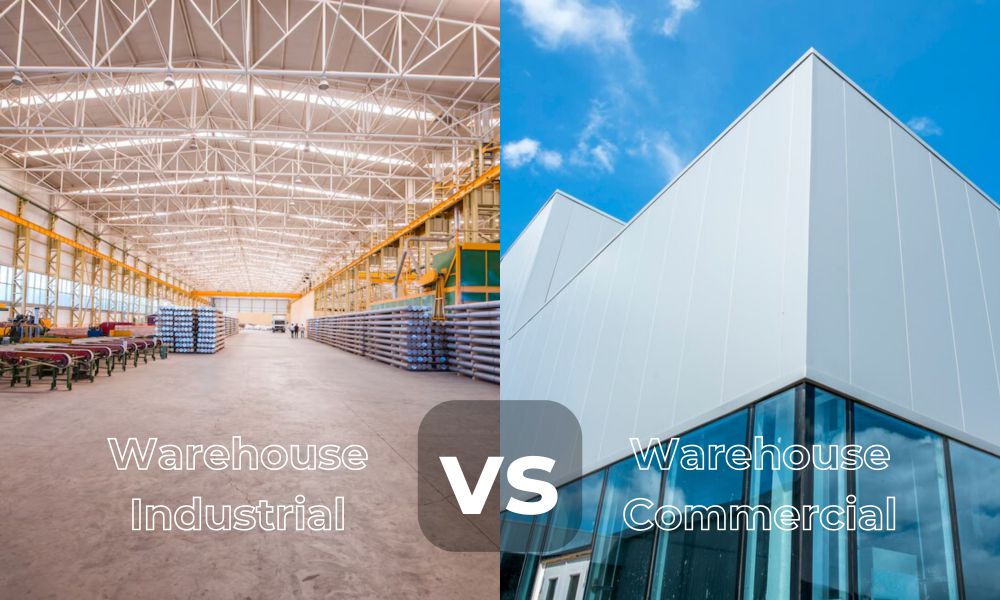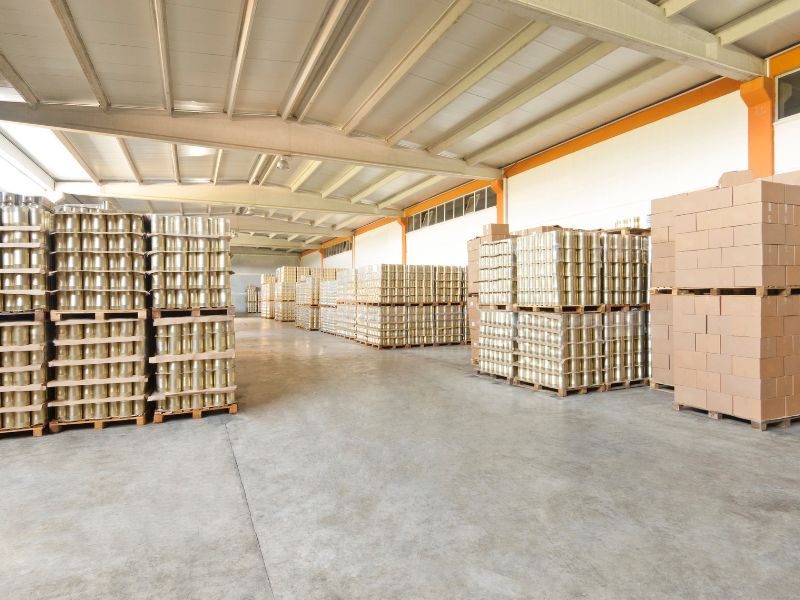
Is a warehouse industrial or commercial? Many investors want to clarify this issue before making an investment decision. Yet, we can help you answer this question and provide specific details on each type of warehouse. Plus, we’ll explain the benefits you can get if you invest in this facility.
Warehouses are a subset of industrial real estate, which is one of four types of commercial real estate. Thus, warehouses are both industrial and commercial properties. Nevertheless, they are not usually regarded as commercial properties in the same way that office buildings or retail storefronts are. They belong to this category due to their business usage and income-generating potential.
We can divide the warehouse types based on two criteria: warehousing and distributing functions (5 types) and commercial needs (3 types).
Regional Warehouse
Regional warehouses are the most common facilities in the Warehouse Distribution category. They are sometimes called Local Warehouses or Office Warehouses.
– Size (square feet): not more than 100,000 square feet
– Shape: Rectangle
– The ceiling height: from 16 to 24 feet
– Primary function: These facilities’ main purpose is to store products, requiring a minimum loading capacity.
Bulk Warehouse
A bulk warehouse is a facility built to store a large quantity of commodities for both long-term and short-term purposes.
– Size (square feet): from a minimum of 100,000 square feet to a maximum of more than 1,000,000 square feet
– Shape: can be U-shaped, L-shaped or I-shaped
– The ceiling height: exceed 20 feet
– Primary function: The bulk warehouse is designed to meet the requirements of a wide variety of tenants, including manufacturing companies, logistics companies, and retailers, in storing, distributing, and shipping goods to retail facilities or consumers.
Heavy Distribution
Heavy Distribution is quite similar to Bulk Warehouses, yet it focuses on distributing rather than storing goods and is not located in urban areas.
– Size (square feet): no size restriction
– The ceiling height: from 16 feet to over 30 feet
– Primary function: distributing goods, especially used by logistic companies

Refrigerated Distribution
Refrigerated distribution buildings, or cold storages are uncommon due to their unique storage purpose. They resemble warehouse structures, yet they have a unique freezer floor that makes them difficult to convert to other warehouse facilities.
– Size (square feet): from 100,000 to 500,000 square feet
– The ceiling height: exceed 24 feet (usually 28 feet)
– Primary function: preserve goods (including fresh fruit, frozen foods, medicines, and biotechnology products) that need to be kept in cold conditions (usually just above freezing temperature)
Rack Supported
Rack Supported buildings are the most rare warehouse type in the US since users need to compromise between flexibility and space efficiency. The structure features independent shipping and storage sections linked by automated conveyor systems, offering more storage space. However, its build-to-suit attribute can be a disadvantage because any modifications to the size or load the racking is intended to support could cause the building to lose its intended functionality.
– The ceiling height: as high as 78 feet
– Primary function: A rack-supported structure consists of storage systems that serve as both the facility’s structural support system for ceilings and walls and its storage purposes. These structures can be designed and constructed as external structures or added to or installed inside an existing warehouse.
Private warehouse:
A private warehouse is a facility for keeping products and is owned and run by a single entity, usually a business or organization. It provides customization, cost-effectiveness, confidentiality, control, security, and flexibility. It usually includes access control systems and surveillance cameras to protect stored items. Quality control procedures guarantee that products stay in ideal condition. Additionally, private warehouses can be modified to fulfil particular industry or legal requirements.
Public warehouse:
A public warehouse is a rental facility that provides handling and storage services to companies of all kinds and sizes. These facilities, run by third-party logistics companies, provide resources, flexibility, and cost savings. They lower transportation costs and increase supply chain effectiveness due to their strategic location near transportation hubs. Additionally, public warehouses reduce risk by implementing insurance policies, safety measures, and disaster recovery plans. Public warehouses enable companies to allocate resources effectively and provide flexible, cost-effective, and efficient distribution and storage options, allowing them to adapt to changing demand and seasonal changes.
Contract warehouse:
A contract warehouse is a storage facility operated by a third-party logistics (3PL) provider under a contractual agreement with a client. It provides specialized storage and handling services tailored to the client’s specific supply chain goals and business operations. Contract warehouses offer flexible and scalable storage and logistics outsourcing at an affordable cost. The contract frequently has risk-sharing provisions and access to cutting-edge technological systems, enabling clients to concentrate on strategic tasks while the 3PL provider takes care of operational details.

Is a warehouse commercial or industrial? Now you know it belongs to both categories. Thus, investing in them can bring you many benefits, including:
– Tenant longevity: Warehouse tenants usually sign contracts for nine to fifteen years to ensure stability and long-term storage of their goods. Thus, it brings stable income for investors.
– High occupancy rate: High warehouse occupancy rates result from the expanding e-commerce industry and the requirement for effective supply chain management, especially in industrially demanding areas.
– Lower construction costs: Warehouse construction costs are significantly lower, making it a more affordable choice for commercial real estate.
– Faster Construction Time: Since a warehouse’s structure is quite simple, the construction time is shorter. It takes only 6 months to construct, which is much less than 3 years for an office building.
– Quick Monetization Cycle: Warehouses are one of the best investments for long-term security without compromising performance since they offer a quick monetization cycle from construction to rental earnings. Warehouses provide investors with a consistent cash flow stream almost immediately after they are built or purchased.
– Ideal for Long-Term Security: Warehouses are stable due to businesses’ consistent demand and quick monetization cycle, providing investors with long-term security.
– Opportunity for Additional Income: You can rent out the additional space (if any) at your facility to increase income. Plus, providing value-added logistics and distribution services can improve the property’s profitability.

As mentioned above, investing in a warehouse has many advantages. Contact Savills Industrial if you need help deciding where to start or where to finance.
We’re Vietnam’s leading industrial real estate team, providing clients with landlord advisory, tenant representation, market research, leasing and brokerage, sale and leaseback, and investment brokerage. With our experience, we can help you source your best fit in Vietnam.